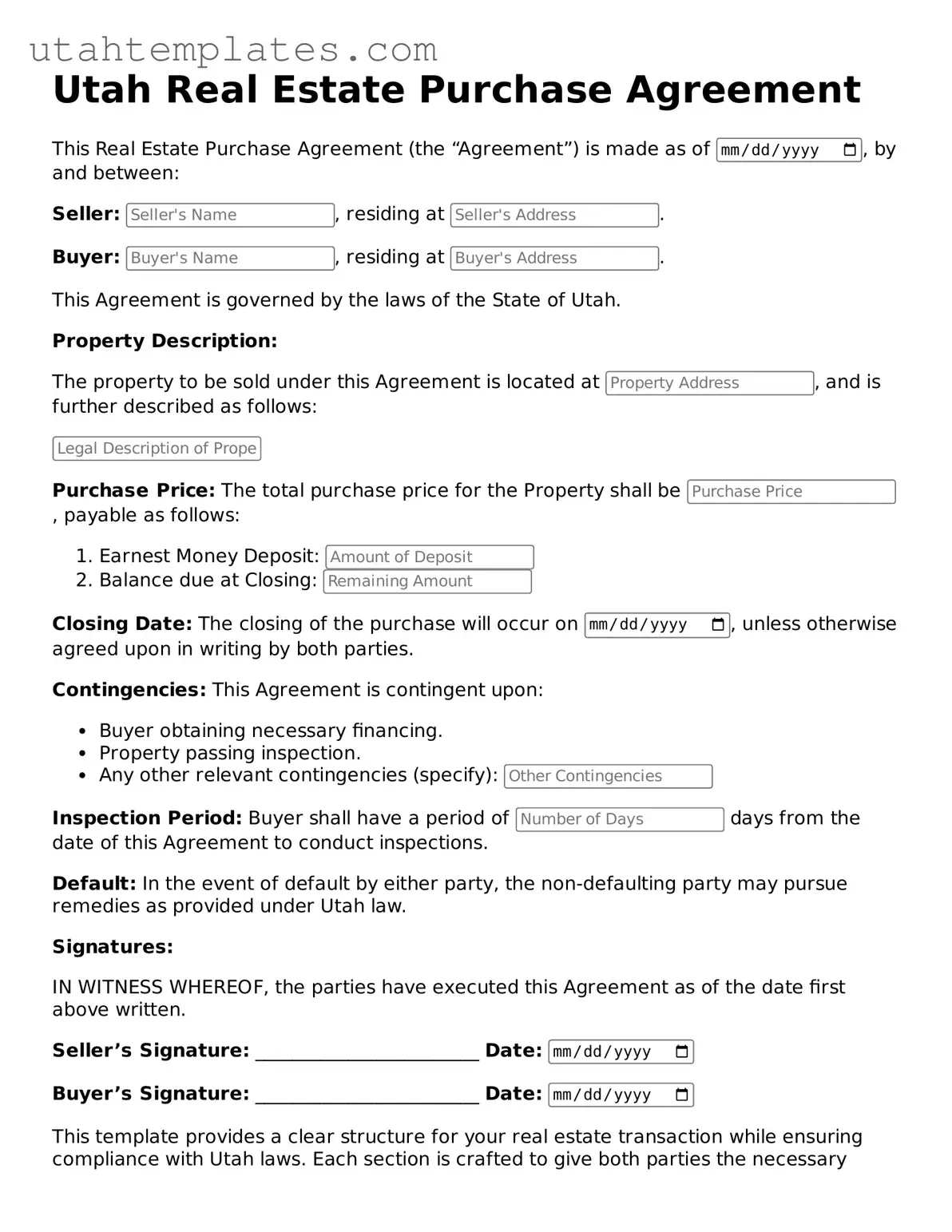Free Real Estate Purchase Agreement Form for Utah
The Utah Real Estate Purchase Agreement is a legal document used to outline the terms and conditions of a property sale in Utah. This form serves as a binding contract between the buyer and seller, detailing important aspects such as price, financing, and contingencies. Understanding this agreement is essential for anyone involved in a real estate transaction in the state.
Launch Real Estate Purchase Agreement Editor Here
